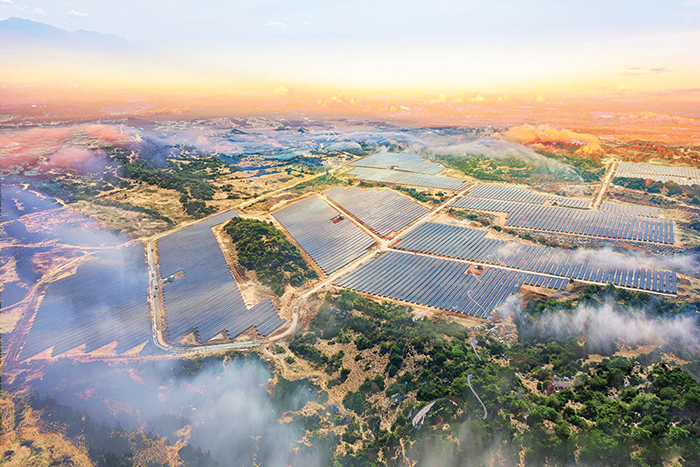The proportion of solar power in source structure: Vietnam surpasses Germany
In recent years, with incentive mechanisms (Decision No.11/2017/QD-TTg dated 11 April 2017 and Decision No.13/2020/QD-TTg dated 6 April 2020 of the Prime Minister), solar power has gained a strong development in Vietnam. By the end of 2020, the total installed solar power capacity across the country has reached about 19,400 MWp (equivalent to 16,500 MW), accounting for about 25% of the total installed capacity of the national power system.
According to Mr. Ha Dang Son - Director of Research Center for Green Growth and Energy, Vietnam has surpassed Germany in the proportion of solar power in the power capacity structure (16,500/60,000MW compared to 51,500/211,000MW and ranked 1st in the ASEAN region in terms of total renewable power capacity (wind and solar).
In particular, the year 2020 has witnessed the breakthrough of Vietnam's rooftop solar power (RSP). By the end of December 31, 2020, more than 100,000 rooftop solar power projects were connected to the power system with a total installed capacity of nearly 9,300 MWp. In which, only 3 days (from December 29 to December 31, 2020), more than 3,000 MW with more than 10,000 projects in operation has been added to the system. It can be said that Decision 13 of the Prime Minister has really created a "push" for RSP development. With many benefits to the investor as well as the community, the RSP installation has been interested in the people and businesses.

Panorama Phuoc Thai solar power plant viewed from above
Challenges in operating power systems
Currently, the total solar power capacity accounts for about 25% of the installed power source capacity of the whole system. However, with the natural feature of solar power, depending s on the sunny time of the day (if the sun is strong, it will generate a lot of electricity and turn off the sun, it will not generate electricity), so the operation of the power system faces many difficulties and problems. In addition, the load growth was lower than expected due to the effects of the COVID-19 pandemic; The large difference between peak and low load during the day also causes many difficulties for the dispatching of the power system.
Specifically, due to the weather conditions in Vietnam, from September to the end of the year tends to cool gradually, therefore the national electricity system load changes into typical patterns in the cold season. With a total capacity of 16,500MW, solar power is equivalent to about 40% of the national load at the midday peak. The National Load Dispatch Center (A0) said that there is a time when the overloading occurs at midday from 10:00 am to 2:00 pm (especially on weekends and public holidays) because of this situation, the load is low, but solar radiation is the best during the day. Meanwhile, during peak hours (from 17:30 to 18:30), the time of the highest power demand in the day, the ability to meet tens of thousands of MW of solar power is almost no longer available. Therefore, to ensure the power supply, the power system always needs to arrange a number of traditional generating units available.
Besides the phenomenon of load capacity difference at different times of the day, the load demand between working days and holidays also shows a large difference. In which, the difference between the peak power in holidays and weekdays is up to about 5,000MW. Therefore, on weekends, A0 had to stop provisioning many coal-fired thermo-power and gas turbine units on the basis of ensuring that the minimum number of grid-connected units according to the technical conditions of the system (ensuring availability, voltage mode, transmission limit ...).
To ensure security and safety in power system operation, the National Load Dispatch Center cannot mobilize the full available capacity of power sources, including renewable energy sources such as electric, wind, solar power at low-load hours (noon, weekends or national holidays).
Currently, the regulation and mobilization of power plants in the system have been and are being carried out by A0 through the AGC (Automatic Generation Control) system. This is a system of equipment that automatically adjusts to increase or decrease power generation capacity to maintain the stable operation of the whole system. This system will automatically monitor and optimize the adjustment of the generated capacity of power plants, including real-time renewable energy plants, ensuring openness and transparency in dispatching the national power system.
|
By 2020, the output of power generated from solar power will reach 10.6 billion kWh, accounting for about 4.3% of the total mobilized output of the whole national electricity system.
|